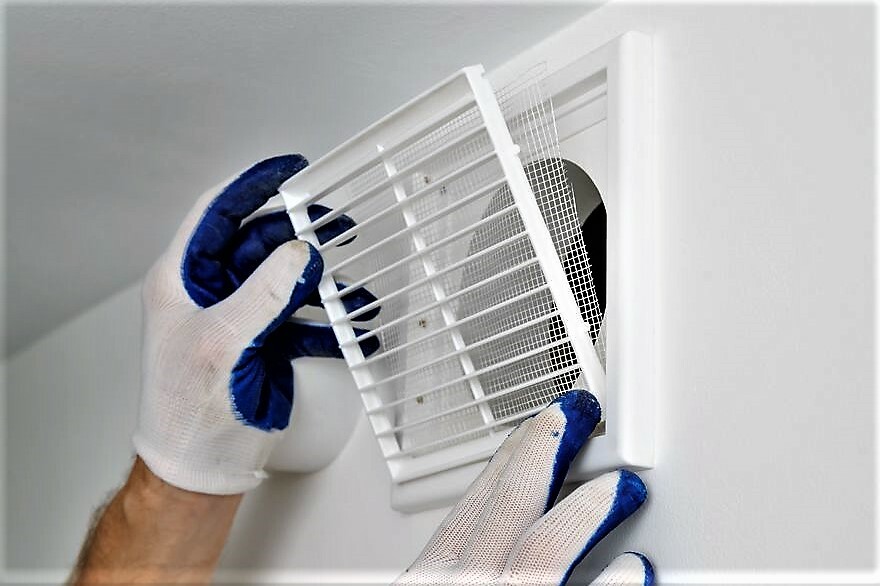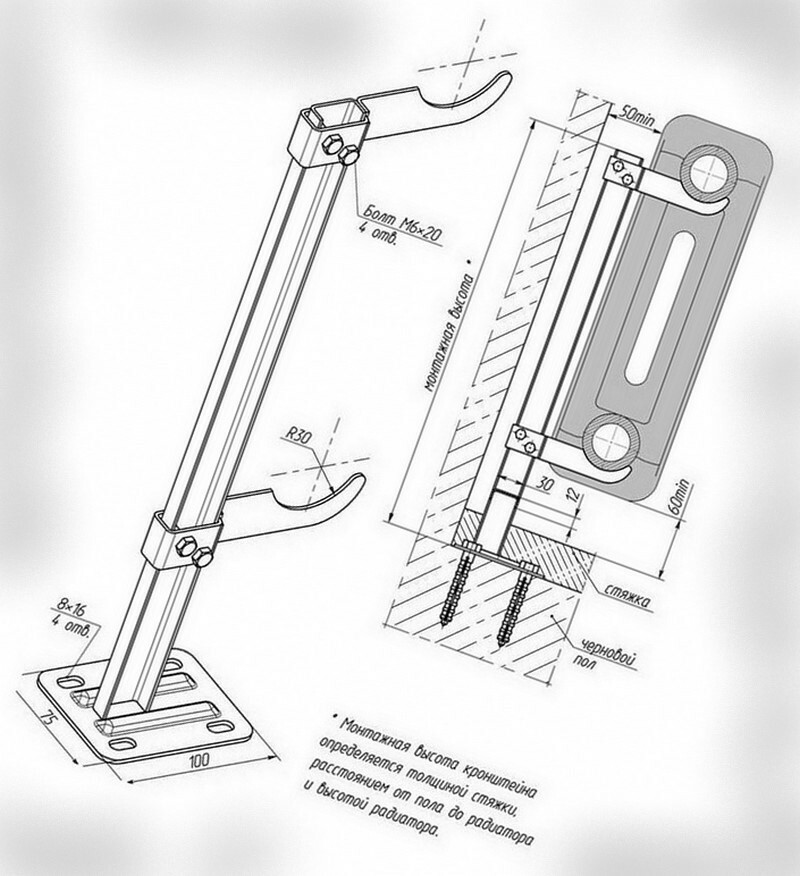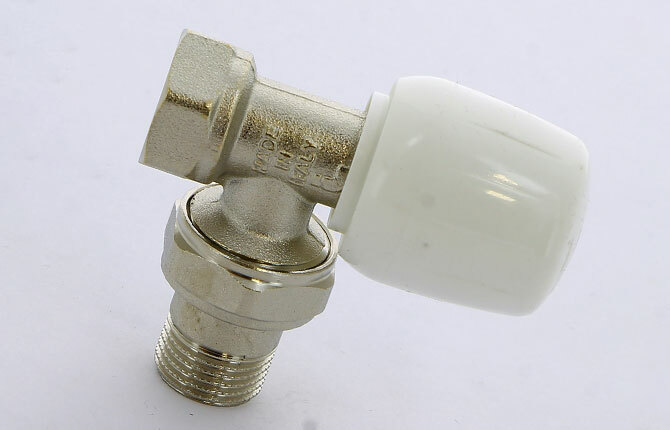Stationary batteries do not always provide a comfortable temperature. In especially cold winters it is necessary to use additional sources of heat. A good option - electric heating radiators, which by and large, include only oil batteries.
In practice, this group includes all electric heating devices equipped with fins - this design best disperses heat. In the article presented by us, all types of heating electrical equipment are analyzed in detail. Reliable information will help determine the best option for you.
The content of the article:
- Advantages of appliances on electricity
-
Types and types of electric radiators
- Electrical batteries with liquid coolant
- Liquidless electric batteries
- Floor convectors
- Characteristics of infrared radiators
- Electric Battery Selection Rules
- Conclusions and useful video on the topic
Advantages of appliances on electricity
There are several arguments in favor of electric batteries. They are easy to install and operate. Installing a mobile electric battery is simply connecting it to a wall outlet and setting modes. When mounting the radiator on the wall, the presence of the bracket is sufficient.
Such a device can always be relocated to another location. To connect the electric battery is not required to order the project and get permission. This applies to all types of these devices, except the internal ones.
Electric radiators are safe and environmentally friendly. Since their body is sealed, no harmful substances enter the surrounding atmosphere. The batteries, which are powered from the outlet, look aesthetically pleasing and will not spoil any interior.

Electric radiators have a nice design. They occupy a minimum of space and warm up a room of medium size in a short time.
The thermostat, which is present in the design of the electric battery, allows you to set the optimum temperature. Having set a certain temperature using a thermostat, prevent overheating of the heating unit.
Some experts believe that manufacturers expose electric oil batteries as innovative ultra-economical heaters.
In fact, this is a common radiator with an oil coolant, characterized by the presence of an aluminum case and a digital indicator. In their opinion, this is just an advertising move with the aim of inflating their value completely unjustifiably.
Types and types of electric radiators
The range of electric radiators, as well as their functionality, differs a big variety. This group includes all heating devices equipped with fins, because This design disperses heat in the best way possible.
All existing electric radiators can be divided into two large groups: liquid devices and liquid-free.
According to the place of dislocation and size allocate electric radiators:
- wall mounted;
- ceiling;
- floor standing
As a kind there are baseboard, vnutripolnye, glass, ceramic devices.

Oil electric batteries are most in demand in the market. Among them there are models equipped with an ionizer.
Based on the design, electric batteries are classified as follows:
- oil;
- fan heaters;
- infrared heaters.
According to the type of radiated heat, electric heaters are divided into two groups. The first includes convectors - devices that ensure the supply of heat due to the movement of heated air masses.
The second group includes systems transmitting infrared radiation of a safe spectrum to objects in the zone of the instrument, after which heated objects spread it into the environment.
There are 2 versions of these heating devices: stationary and portable.
Electrical batteries with liquid coolant
Batteries of this type are distinguished by simplicity of execution with a small set of components. Heating occurs by tubular electric heater (heater) small power - 300 - 500 watts.
Also there are more powerful items. Heating elements are placed in an aqueous or oily environment, in some cases - in non-freezing liquid.

The current flows through the heating element and heats it. Further, the heat is transferred to the heat-transfer fluid, as which, most often, mineral oil is used. Good heat dissipation allows you to well heat the plane of the battery
On the market there are two models of liquid electric batteries: hermetically closed and open. In the latter case, the coolant is added to the device if necessary.
The heating element heats the coolant to a certain temperature, which transfers the temperature to the metal case, which radiates the heat received into the room space. The larger the heat release surface, the better the air in the room warms up.
As a rule, aluminum electric batteries. This material is most suitable for the manufacture of heating devices, because it is light and has the necessary properties that allow it to withstand high temperatures.

Liquid electric batteries with coolant in the form of a special non-freezing liquid are very much in demand. Such a coolant does not cause corrosion of the walls of the radiator and heating elements.
If liquid-cooled electric batteries use antifreeze as a coolant, they are well suited for rooms that are heated only periodically. Electric batteries, where mineral oil is used as a coolant, consume more electricity than radiators on distilled water.
This is explained by the fact that the oil has a greater density, therefore, warms up with a large expenditure of energy, but to a higher temperature. Criteria oil heater selection detailed in this article that we recommend reading.
Structurally, the electric battery consists of sections, the upper and lower collector. Heater placed in the lower manifold. The design does not provide for the presence of open heating elements, so neither oxygen nor dust particles in the air are burned.
Radiators work silently, but since the surface warms up to a high temperature, it is necessary to ensure that it does not come into contact with easily inflammable objects.

The case of a high-quality heater is made of stainless steel and, unlike a household appliance with a steel case, can be used for any room.
According to users, the best liquid electric batteries include:
- Delonghi GS 770715 - battery of 7 sections, designed for 15 m², with a thermostat, fan, with protection from both overheating and freezing;
- Mystery MH-7001 - radiator with three degrees of adjustment;
- ROLSEN ROH-D9 - nine-cell battery, equipped with a portable dryer;
- Electrolux EOH / M-1157 - designed for a room up to 15 m².
In general, electric batteries used for heating are economical devices. When turned on, they use the maximum power, but heating the coolant to the desired temperature, the thermostat turns off the heating element. These batteries are easy to install and manage.
Liquidless electric batteries
Dry or liquid-free electric batteries have a lower mass than liquid counterparts and heat up faster.
There is no intermediate coolant, so the heat transfer occurs to the heat transfer surface from the heating element directly. Such radiators work on the principle of convection, hence their more common name - electric convectors.

The dimensions of electric batteries by analogy with conventional radiators can be increased by increasing the additional sections, but subject to an increase in the power of the heating element.
The air heated by the heating element, rushing upward, displaces the air mass with a lower temperature from there. That, in turn, passes through the body of the convector and repeats movement according to the previous scheme.
The surface of the convector is heated, but the temperature of the body is not very high. Use liquid-free electric heaters only autonomously. The most popular models of liquid-free electric batteries include SIRA Onice 1600. The radiator has 8 sections, thermal power 1.6 kW, built-in temperature controller.
Let out convectors both wall, and floor. A special group - plinth electric batteries. While the installation of the first two modifications can be performed without the involvement of specialists, the installation of the third type of electric batteries requires special knowledge and experience. Usually, the installation of such convectors is planned at the construction stage.
Floor convectors
Since radiators of this type are located in a hollow in the floor, they belong to a hidden type of heating system, therefore, without occupying unnecessary space, they heat the room unnoticed.
Their heating occurs by creating a heat-air curtain on the path of penetration of cold air through the most vulnerable places in the room. The floor electric radiator functions according to the principle of convective heating.

The heat exchanger heats the air masses from below. Further, according to the rules of convection, they rise higher and replace air layers with a lower temperature. Heating occurs quickly due to the high heat transfer of the materials from which such an electric battery is made and a large heating area
In the battery itself insert the heater, it is mounted on a plate of metal with good thermal conductivity - aluminum, copper, thin steel. Sometimes metal is replaced by ceramics. This solution allows you to expand the heat transfer surface.
The case-box, at the bottom of which is placed the heating element with lamellar plumage, in its outline resembles the letter U. So that the heat does not go to the floor and to the sides, the housing is insulated.
To adjust the thermal regime, a temperature sensor equipped with a microprocessor is built into the box. If a forced ventilation draft is not provided for the floor radiator, the height of the case in which the battery is enclosed should not be less than 200 mm.
The design is covered with a durable metal decorative grille, which does not exceed the level of the floor and is able to withstand the weight of a person.
The capacity of this enclosing structure, which is determined by the ratio of its total area to the total size of the slots, is important. A sufficient amount of cold air masses and heat flux must pass through the grid.
More powerful electric radiators to enhance convection properties equip additional fans. The height of the body in this case does not matter.
To reduce the noise from a running fan, it is mounted on vibration supports with inserts of porous rubber. The presence of a fan ensures faster heating of the room and a reduction in electricity consumption.

Electric field cars differ from conventional batteries in their design as well as in a slightly larger heat exchange area.
Electric batteries, recessed in the floor, have a number of positive qualities. The place to install them can be defined in any part of the room, they practically do not take up space, and thanks to a large assortment of gratings they fit well into any interior.
There are linear and roll grids. Crossbars in linear grids can be both transverse and longitudinal, and in roll bars only transverse.
The disadvantage of these heaters in the complexity of installation and cost, which is much higher than that of wall-mounted batteries. In rooms with high ceilings - more than 3 m, they are not very effective, in addition, contribute to the dispersion of dust in the room.
Characteristics of infrared radiators
Infrared electric heaters are fundamentally different from other types of similar devices. Their task is to warm objects in their zone of action.
This is realized through electromagnetic waves. Their radiation does not heat the air in the room, and the device itself remains cold. Warm environment gives a warm environment.

In the production of infrared radiators used natural method of heating. In the same way as the sun warms the earth, the device heats the objects around it
Based on the type of heating element, infrared radiators happen: Tenovy, ceramic, carbonic. The heater of the first type consists of a metal case, an insulator, an anodized plate, a foil and a heating element. The optimum thickness of the anodized layer is 0.025 mm, and that of the foil is 0.012 mm.
Depending on the model, the power of the device varies between 0.8 and 3 kW. Adjust it manually or using a thermostat.

An infrared heater, made on the basis of a ceramic panel, “eats” a minimum of useful space. Release both monophonic panels, and decorated by a photo printing
Ceramic heaters are available in three versions. They are wall, floor and table. The first differ in considerable dimensions and are visually similar to the conditioner.
Floor models are most popular. For security reasons, they are equipped with special sensors that disable the device in the event of its tipping or overheating.
Desktop appliances are often used outdoors. During operation, they rotate and effectively heat objects that are within the reach of infrared radiation, objects and people as well.
The heating element in a carbon fiber infrared heating device is carbon fiber enclosed in a vacuum quartz envelope. Manufacturers claim that this fiber practically does not fail and you can use it indefinitely. Only a quartz tube can fail to break when it falls.
The most popular models of infrared heaters are:
- Polaris The PMH 2095 is a powerful, practical device with a stylish design;
- Electrolux EIH / AG2-2000E - floor-standing device that effectively maintains the temperature in a room of up to 25 m²;
- Timberk TCH A5 1000 - ceiling model, characterized by compact dimensions and easy settings;
- Hyundai H-HC1-18-UI572 - a device for installation on a wall or ceiling with many useful features;
- NeoClima The NC-CH-3000 is a mechanically controlled compact heater.
Since infrared emitters are non-invasive, you can comfortably feel yourself indoors 15 minutes after connecting the device.
They do not emit any combustion products during work, and there is no need for special ventilation for them. But if the ventilation system in the house is present, then they have no effect on its work.
Electric Battery Selection Rules
The correct choice of batteries for electric power provides for the consideration of the thermal power of the device. If the heater is planned to be used as an additional one, it will take no more than 80 W to heat a 1 m² room area of 2.6 m height.

Infrared ceiling heater successfully combines functionality and security. Its disadvantage is that it is warm only in the area of its location
For heating a specific area of premises will require a certain number of sections. The rated power of one is 0.13 kW. Based on this parameter and the area of the room, it is easy to calculate the optimal number of sections.

In some cases, you must install multiple batteries. It is rational to make such a decision if there are two windows in the room or the area is exceeded, the norm of which is 22 m²
If a convective electric battery is the only type of heating, then a room of 10 m² with a ceiling height of 2.6 m² to a comfortable temperature will heat a 1 kW heater. When the ceiling is above the specified value, the result should be increased by one and a half times.
This is averaged calculation, in order to get more accurate data it is necessary to take into account:
- the material from which the building envelope is built;
- the presence of the ventilation system and its appearance;
- device type and its functionality;
- network settings;
- temperature range requirements.
When choosing an electric battery from a certain price category, you should be aware that, to a large extent, the type of thermostat influences the price of the battery. A mechanical thermostat is two times cheaper than an electronic one, but such savings are relative - the presence of an electronic thermostat saves about 4% of electricity.

The heating system assembled from electric radiators has a higher efficiency than that of water and steam heating systems based on a solid fuel or gas boiler
The choice determines the location of the intended installation of the battery. Dimensions of the device and properties depend on it. If a special niche is provided for it, the battery should freely enter this space.
The same condition must be met in the case of placing the radiator under the window opening. To install in the bathroom need a radiator with moisture protection. In order for the electric battery to work reliably, you should make a choice among models of famous brands. When installing it is necessary to comply with the requirements set forth in the instructions.
For safety reasons, a gap of at least 0.5 cm is required between a battery placed in a fixed location and a wall, and the wire leading to the outlet should not be in contact with the heated surface.

In no case can the upper collector be closed with anything. To dry things, thus, will not work - the sensor will simply turn off the unit in an emergency order at the slightest overheating
Installation of devices for which input in work, the plug is provided, does not demand any preparatory actions.
More difficult to solve this issue when to connect multiple batteries and connect them to one system, you need to additionally bring the cable.
A prerequisite is the inclusion in the circuit of a protective switch of at least 30 A, and the main cable core should have a cross section corresponding to the sum of the capacities of all batteries. Such a heating system can be controlled using the remote control.
Conclusions and useful video on the topic
With the principle of operation of the electric radiator will visually introduce the video:
Every year the range of electric radiators is updated. Changing for the better, not only their technical characteristics, but also design.
In order to make the best choice, you need to analyze the available information and on the basis of this, decide which technical indicators are suitable for your particular case.
Please write comments in the block form located under the text of the article. Tell us about how to choose an electric radiator for use in the country, in the office or apartment. Share useful information, ask questions, post pictures on the topic.


